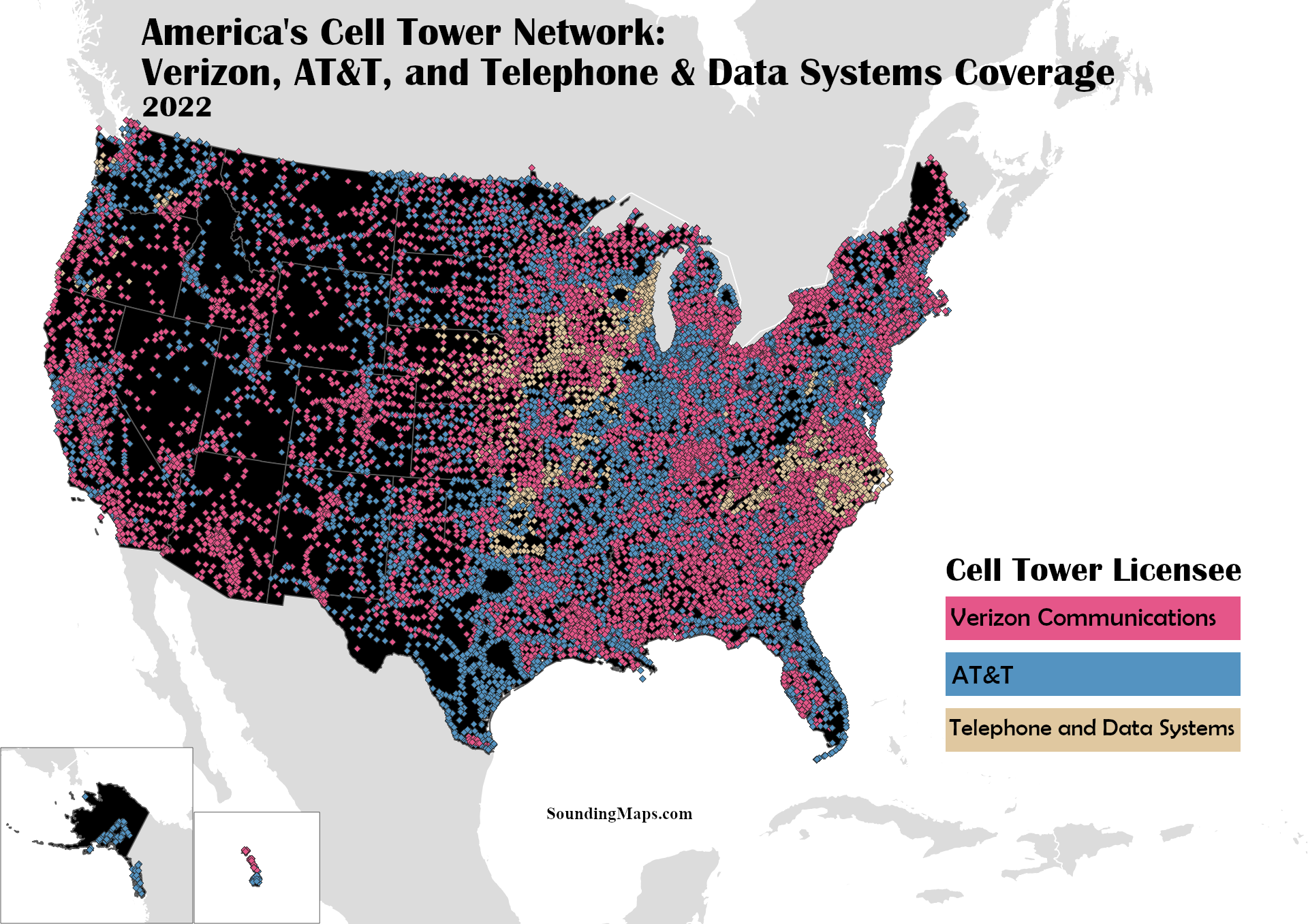
This map visualizes the ten significant companies’ dominance of crude oil transmission pipeline infrastructure throughout the United States and Canada. Selected by pipeline length, it is a map of the United States and Canada’s major crude oil pipeline networks. Ten North America crude oil companies dominate the energy transmission network.
Methodology Of Mapping The Crude Oil Pipelines
This map is the most precise depiction of crude oil transmission pipeline ownership in the United States and Canada. Our data collection process involved the gathering and curation of data sets from the U.S. Energy Information Administration (EIA), including the names of operators and pipelines across the region, ensuring the highest level of accuracy. This data includes interstate trunk lines and selected intrastate lines but excludes gathering lines.
Over the past twenty years, the midstream energy industry has been a dynamic landscape of mergers and acquisitions. This dynamism has led to many pipelines involving joint ventures and partnerships, with certain operators belonging to parent companies. For instance, Energy Transfer owns Sunoco and inherits the pipelines, including the Permian Express Oil Pipeline. We curated this data to portray the actual ownership of pipelines, reflecting the current state of the industry.
Pipelines owned by a limited partnership are attributed to the general partner. For example, Western Midstream Partners, LP (WES) owns the Western gas pipeline. The general partner is a wholly-owned subsidiary of Occidental.
In cases where a 50/50 joint venture owns a pipeline, the pipeline will be attributed to the main operator. For example, the Seaway Crude Pipeline is a 50/50 joint venture between Enterprise Partners, the operator, and Enbridge, which purchased its ownership interest from ConocoPhillips on November 16, 2011. Therefore, ownership on the map attributes to Enbridge.
For other joint ventures like 85/15 split ownership, the owner with the largest share of ownership will represent the pipeline on the map.
The total pipeline length for each company was calculated using native QGIS spatial functions and algorithms. For operating revenues, data was pulled from macrotrends.
Longest Crude Oil Transmission Pipelines In 2023
We sort the largest crude oil pipeline companies by total pipeline length. Since most of the companies included operate in many business segments besides the transportation of crude oil, sorting by operating revenue or market cap would be misleading. Total miles includes interstate trunk lines and selected intrastate lines but excludes gathering lines.
1. Enbridge – 9,578 miles
- Transmission pipeline length: 9,578 miles
- Operating revenue: $32.355B
Enbridge, one of the largest pure crude oil players in North America, moves about 30% of all crude oil produced in North America and transports nearly 20% of all natural gas.
On September 6th, 2016, Canadian Pipeline operator Enbridge Inc. agreed to buy Houston’s Spectra Energy Corp. in an all-stock deal valued at about $28 billion, creating a North American energy infrastructure giant. By doing so, Enbridge acquired the Express System and Platte Pipelines, adding on an additional 1,683 miles of pipeline.
2. TC Energy – 6,165 miles
- Transmission pipeline length: 6,165 miles
- Operating revenue: $11.8B
TC Energy, traded as TSX: TRP and part of the TSX 60 index, has been a leader in the energy industry since 1951. Based in Calgary, Alberta, the company operates across Canada, Mexico, and the United States, offering services like pipeline transport, gas storage, and electricity generation.
3. Energy Transfer – 5,040 miles
- Transmission pipeline length: 5,040 miles
- Operating revenue: $78.486B
In 2012, Energy Transfer purchased petroleum operator Sunoco in a deal valued at about $5.3 billion. All of the Sunoco pipelines will be attributed to ET. This includes the Permian Express Oil Pipeline, initially owned by Sunoco Logistics(85%) and ExxonMobil (15%), in a joint venture called Permian Express Partners LLC.
In 2017, Sunoco Logistics merged with Energy Transfer and became its wholly-owned subsidiary. To this date, Exxon Mobil retains control of 15% of the Permian Express Partner assets.
Energy Transfer And Lotus Midstream announced on March 27, 2023, that it would acquire Lotus Midstream Operations and its assets in a $1.45 billion deal.
4. Plains – 4,346 miles
- Transmission pipeline length: 4,346 miles
- Operating revenue: $48.712B
Plains Resources, founded in 1981, began as an oil and gas exploration and production company. In the ’90s, it focused solely on crude, acquiring terminals, gathering systems and pipelines, and creating a midstream network.
Plains went public in 1988 and went on a merger and acquisition spree. Although Plains has only 4,346 transmission pipeline miles compared to Enbridge, when accounting for gathering systems, it maintains 18,075 miles total.
5. Phillips 66 – 2,507 miles
- Transmission pipeline length: 2,507 miles
- Operating revenue: $147.399B
Phillips 66 is a spin-off of ConocoPhillips. The company refines, transports, and markets natural gas liquids. Competing with Plains in California, Phillips 66 owns the Line 200 pipeline, which transports crude oil from Kern County to the Phillips 66 refinery in Rodeo, CA.
6. Enterprise Products – 2,078 miles
- Transmission pipeline length: 2,078 miles
- Operating revenue: $49.715B
The South Texas Crude Oil Pipeline System is a pivotal set of pipelines for Enterprise. It runs from Wilson County, Texas, to Houston, Texas, and includes the Eagle Ford Expansion and Rancho I and II pipelines.
In October 2023, Enterprise announced several capital-intensive projects to support continuing production growth in the Permian Basin. One of which is to return the Seminole Pipeline to NGL transportation to accommodate the increased demand until the construction of the Bahia Pipeline is complete.
The Seaway Crude Pipeline System (SCPS) includes both the Seaway Pipeline and the identical Seaway Twin Pipeline. A consortium of oil industry companies formed in 1974 claimed original ownership of the pipeline, which was used to transfer (then) cheap foreign oil from Texas ports to refineries in the Midwest. Fast forward to today, the pipeline is a 50/50 joint venture between Enbridge and Enterprise Products. Since it’s the operator, we attribute ownership on the map to Enterprise.
7. Marathon – 1,680 miles
- Transmission pipeline length: 1,680 miles
- Operating revenue: $148.379B
Marathon Oil operates and owns a stake, along with Shell and Valero, in the Louisiana Offshore Oil Port (LOOP) Pipeline. The pipeline transports crude oil between the Marine Terminal and the Clovelly Dome Storage Terminal. Since 2018, it has had a reversible flow.
In addition, Marathon owns several pipelines that operate from Illinois throughout Ohio and Indiana.
The Patoka to Lima Crude System is a 396-mile 20-inch pipeline extending from Patoka, IL, to Lima, OH. It’s capacity is 249 MBPD. Another primary pipeline is the Catlettsburg and Robinson Crude System. This 140-mile, 20-inch pipeline transports crude oil from Patoka to Owensboro, KY, and another 266 miles of 24-inch pipe transports crude oil from Owensboro to Catlettsburg, KY.
8. ONEOK – 1,664 miles
- Transmission pipeline length: 1,664 miles
- Operating revenue: $17.677B
ONEOK inherits all of its ownership in crude oil pipelines from Magellan Midstream Partners. In September 2023, ONEOK acquired Magellan in a cash-and-stock deal valued at $18.8B, including debt.
9. Koch Industries – 1,533 miles
- Transmission pipeline length: 1,533 miles
- Operating revenue: $125B
Koch Industries commissioned the South Texas Crude Oil Pipeline in 2011 to become the largest pipeline transporter of South Texas Crude.
In addition to Texas, Koch Industries operates the Minnesota Pipeline System. Lines 1-3 have a 300,000 bpd collective capacity and are 256 miles in length (three parallel lines). Line 4 (MinnCan Pipeline) has a 165,000 bpd capacity and a length of 303 miles.
10. Kinder Morgan – 1,207 miles
- Transmission pipeline length: 1,207 miles
- Operating revenue: $15.334B
In 2018, Kinder Morgan sold the Trans Canada Mountain pipeline to Trans Mountain Corporation (TMC), a government-created corporation. Despite this, Kinder Morgan has assisted with operations. The EIA still reports this in their most recent data set.




